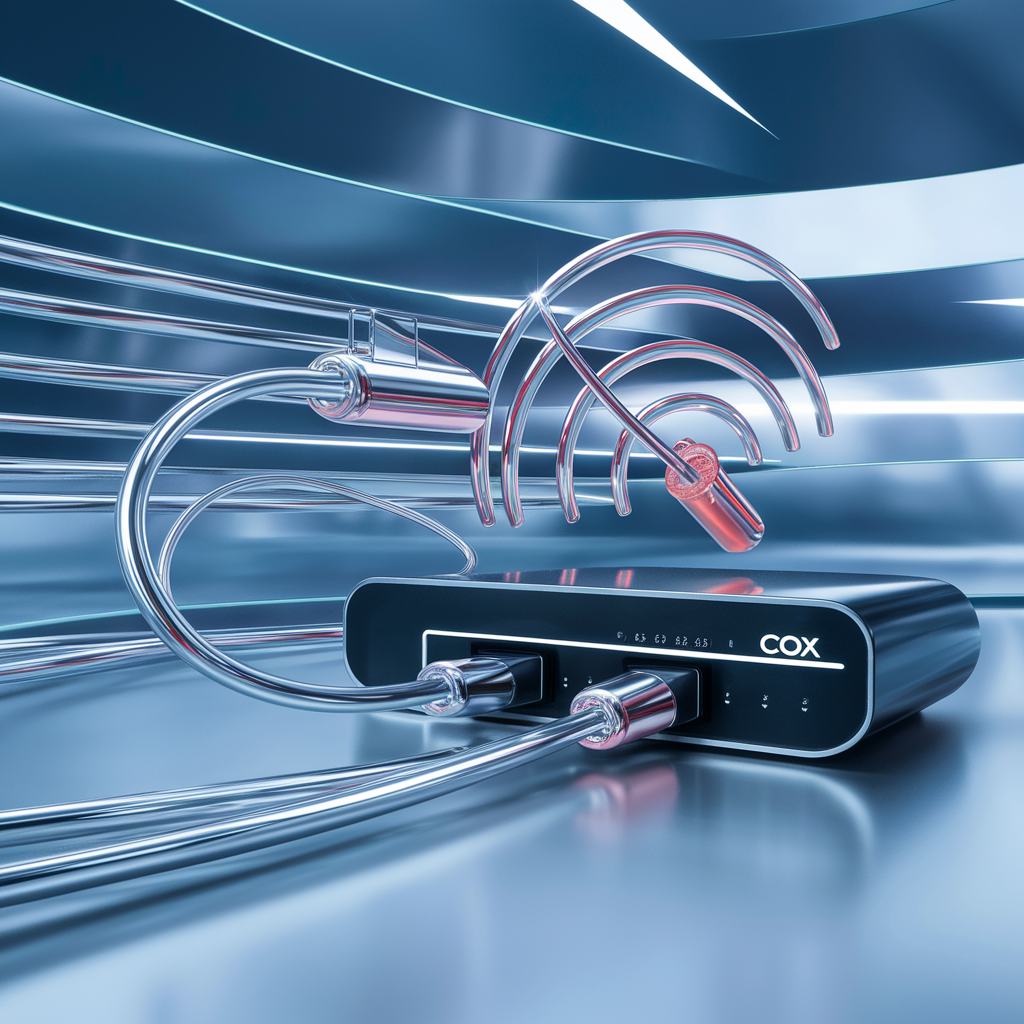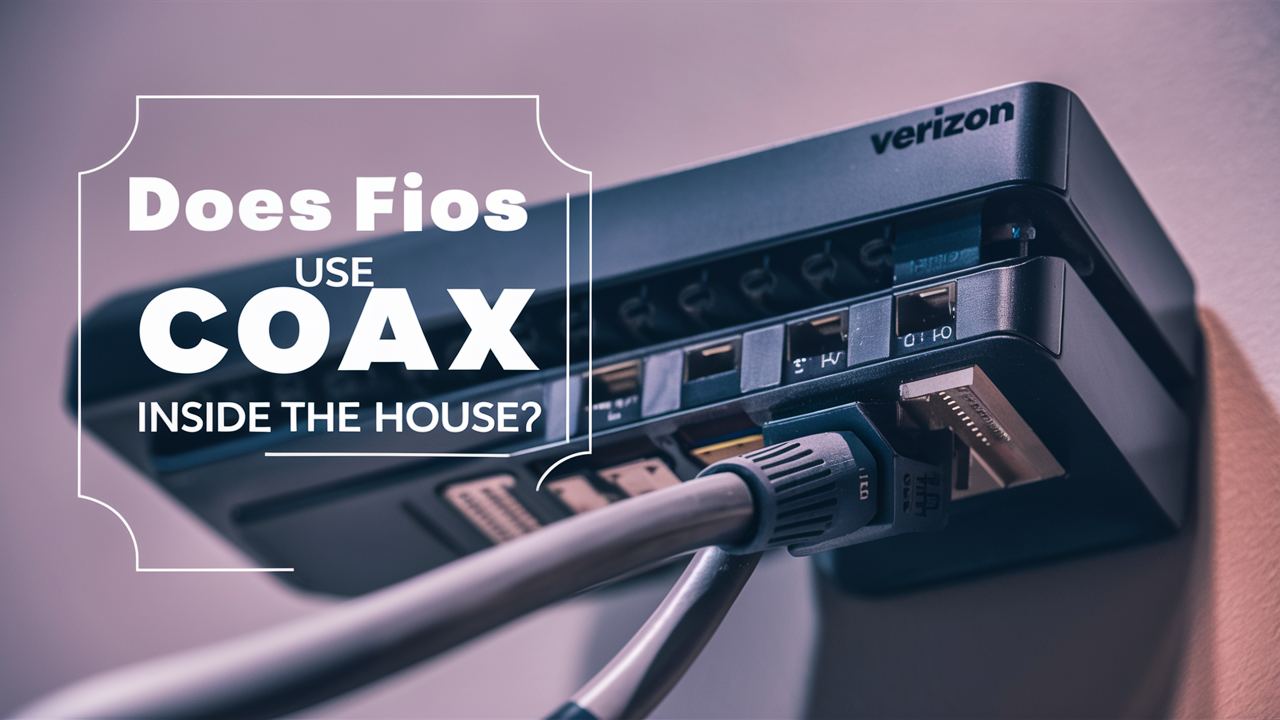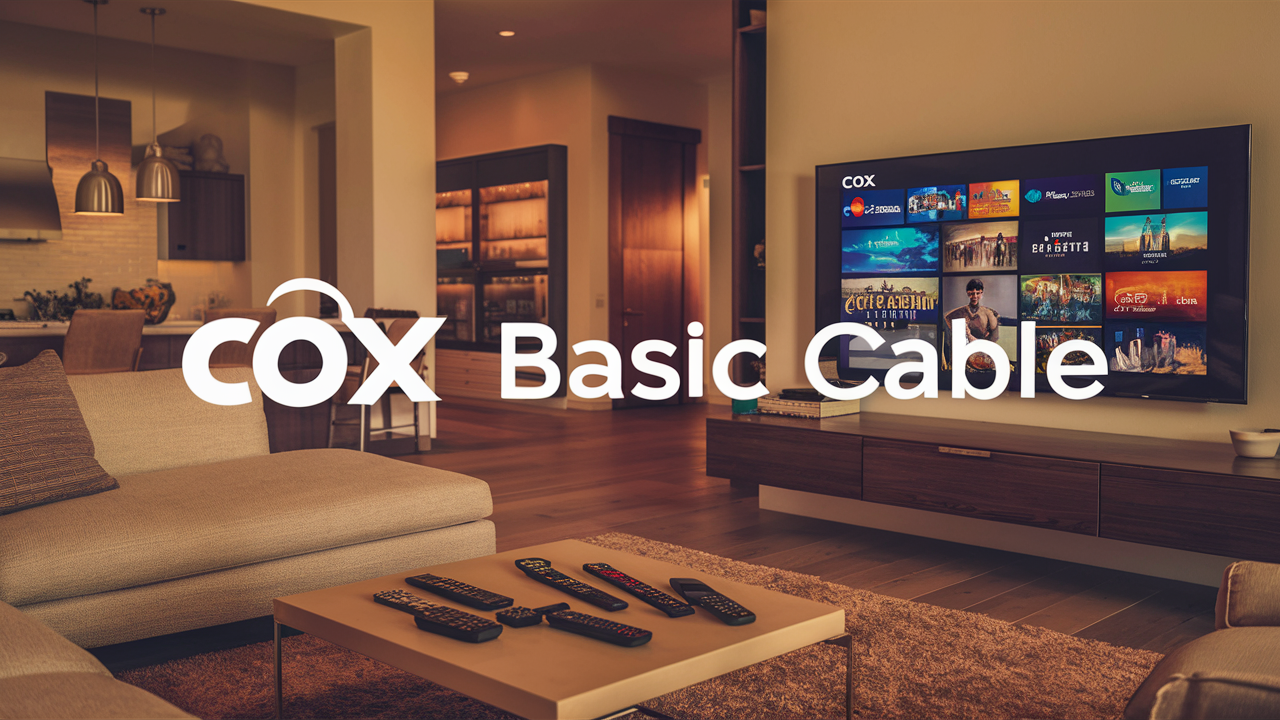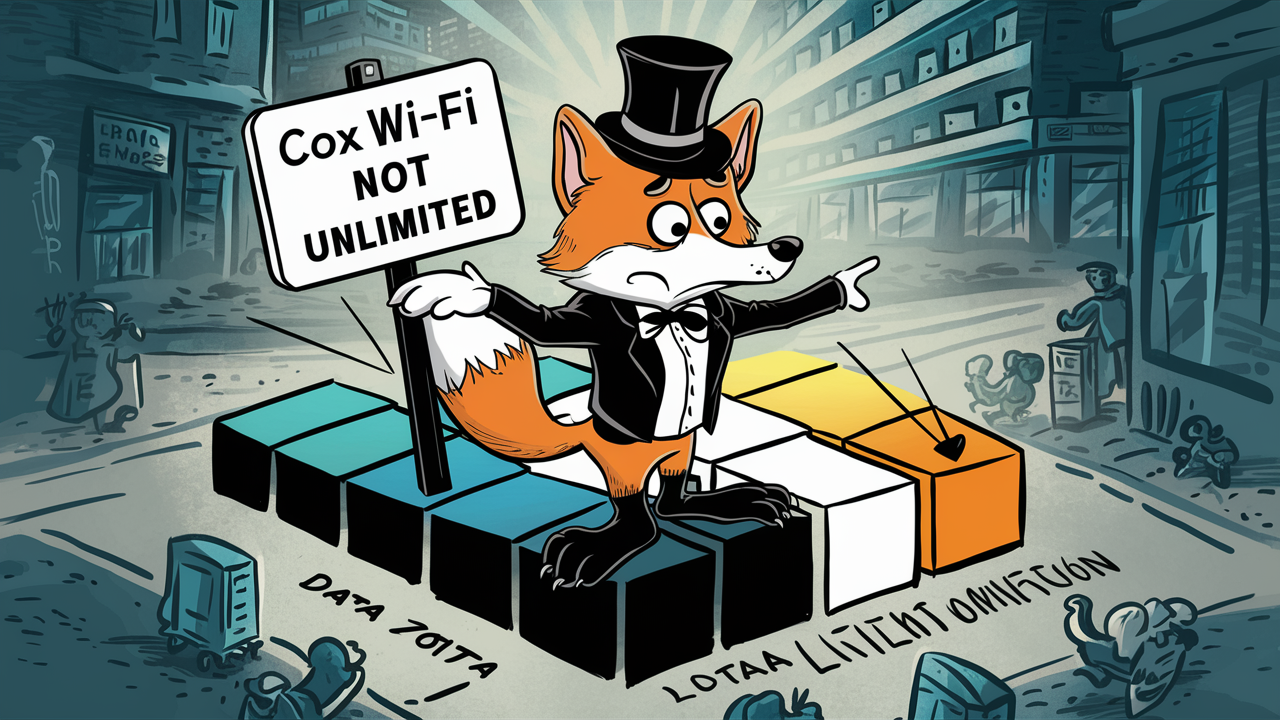Is Cox Internet Wired or Wireless?

Cox Internet, a leading provider, offers a robust connection. But is it primarily wired or wireless? This comprehensive guide clarifies Cox's infrastructure, explaining how you receive your internet and the technologies involved, ensuring you understand your connection's foundation for optimal performance and troubleshooting.
Understanding Cox Internet Infrastructure
Cox Communications operates a vast and intricate network designed to deliver high-speed internet to millions of households and businesses. The fundamental question for many users is whether this service relies primarily on wired connections or if wireless technology plays a more significant role in the actual delivery of data to their premises. Understanding this distinction is crucial for comprehending internet performance, troubleshooting connectivity issues, and making informed decisions about service plans and equipment. Cox's infrastructure is a hybrid system, utilizing a robust wired backbone that then facilitates wireless access within the home or business environment. The internet signal travels through physical cables to reach your location, and from there, wireless technology, primarily Wi-Fi, extends that connection to your various devices.
Wired Versus Wireless: The Core Distinction
The primary distinction between wired and wireless internet lies in the physical medium through which data travels. A wired connection, often referred to as an Ethernet connection, uses physical cables – typically coaxial or fiber optic cables in the case of Cox – to transmit data directly from the internet service provider's (ISP) network to your modem and then, potentially, to your computer or other devices. This direct physical link generally offers superior speed, stability, and lower latency (the delay in data transfer).
Conversely, a wireless connection, most commonly Wi-Fi, transmits data through radio waves. This eliminates the need for physical cables to connect devices to the network, offering unparalleled convenience and mobility. However, wireless signals can be susceptible to interference, distance limitations, and can sometimes offer lower speeds and higher latency compared to a direct wired connection. For Cox Internet, the signal originates from their network via a wired infrastructure and is then often broadcast wirelessly within your home or office.
How Cox Internet Works: The Physical Layer
At its core, Cox Internet relies on a sophisticated physical infrastructure to deliver service. This infrastructure is primarily a combination of coaxial cable and, increasingly, fiber optic lines. These physical cables form the backbone of the internet delivery system, carrying the data signals from Cox's central offices and network hubs all the way to the curb or directly into your home or business.
When you subscribe to Cox Internet, a technician will typically install a connection point at your property. This connection point is a physical cable that terminates at a modem. The modem acts as a translator, converting the analog signals from the cable line into digital data that your devices can understand. This physical connection is the absolute foundation of your internet service. Without this wired link from Cox's network to your modem, there would be no internet service to then distribute wirelessly.
Cox Internet Technologies Explained
Cox utilizes several underlying technologies to deliver internet connectivity, each with its own characteristics and benefits. Understanding these technologies helps to clarify why your connection behaves the way it does and what future upgrades might entail.
Cable Internet: Cox's Primary Delivery Method
For the vast majority of its customers, Cox Internet is delivered via cable internet technology. This system leverages the same coaxial cable network that was originally designed for cable television. In this setup, data is transmitted over these coaxial cables. The technology used is a form of broadband internet access that shares bandwidth with cable TV services.
Cable internet is a shared medium, meaning that the bandwidth available on a particular segment of cable can be shared among multiple households in a neighborhood. While Cox employs sophisticated technologies to manage this shared bandwidth and ensure adequate speeds for all users, peak usage times in a densely populated area can sometimes lead to a slight reduction in speeds compared to off-peak hours. Despite this, cable internet is known for offering high speeds, often reaching hundreds of megabits per second (Mbps), making it a popular and reliable choice for many consumers. As of 2025, Cox continues to heavily invest in upgrading its cable infrastructure, employing DOCSIS 3.0 and DOCSIS 3.1 standards, which significantly enhance the speed and efficiency of cable internet delivery. DOCSIS 3.1, in particular, allows for gigabit speeds over existing cable lines.
Fiber Optic Internet: The Future of Cox
Cox is actively expanding its fiber optic internet offerings, often marketed as "Cox Fiber" or "Gigablast." Fiber optic internet is considered the gold standard for broadband connectivity. Instead of using electrical signals over copper or coaxial cables, fiber optic uses pulses of light transmitted through thin strands of glass or plastic. This technology offers several significant advantages:
- Superior Speeds: Fiber can deliver symmetrical upload and download speeds, often reaching 1 Gbps (gigabit per second) and beyond. This means your uploads are as fast as your downloads, which is crucial for video conferencing, large file uploads, and cloud backups.
- Lower Latency: Light travels faster and with less degradation than electrical signals, resulting in significantly lower latency. This is critical for online gaming, real-time applications, and a more responsive internet experience.
- Increased Reliability: Fiber optic cables are less susceptible to electromagnetic interference, temperature fluctuations, and other environmental factors that can affect copper-based lines. This leads to a more stable and reliable connection.
- Future-Proofing: Fiber optic infrastructure has a much higher capacity for data transmission than cable, making it inherently future-proof as internet demands continue to grow.
While fiber optic is not yet available in all Cox service areas, it represents a significant strategic investment for the company. Where available, it provides a demonstrably superior internet experience. For users seeking the absolute fastest and most reliable connection, checking for Cox Fiber availability in their area is highly recommended.
DSL Internet: Less Common for Cox
DSL (Digital Subscriber Line) internet uses existing telephone lines to transmit data. While it was a common broadband technology in the past, it is generally slower and has more limitations than cable or fiber. Cox Communications has largely phased out DSL as a primary offering in favor of its more advanced cable and fiber networks. In most areas where Cox operates, you will find cable or fiber internet services. DSL is typically offered by traditional phone companies in areas where cable or fiber infrastructure has not been deployed. Therefore, while technically a wired technology, it's not a significant part of Cox's current internet service portfolio.
The Role of Wireless in Your Cox Connection
While Cox's internet service is delivered to your home via a physical wired connection (coaxial cable or fiber optic), wireless technology plays a crucial role in how you access that internet within your property. The wired connection is the gateway, and wireless is the distribution system inside your home.
Modems and Routers: The Bridge to Wireless
The primary devices that bridge the wired Cox internet connection to your wireless devices are your modem and router.
- Modem: As mentioned earlier, the modem connects directly to the Cox network via a coaxial cable or fiber optic line. Its job is to decode the incoming internet signal and make it usable for your home network. Cox typically provides a modem, or you can purchase a compatible one.
- Router: The router is the device that creates your Wi-Fi network. It takes the internet connection from the modem and broadcasts it wirelessly throughout your home using radio waves. Most modern Cox-provided gateways are combination modem-router units, often called "gateways." These devices handle both the connection to Cox's network and the creation of your Wi-Fi network. The router manages traffic between your devices and the internet, assigning IP addresses and ensuring data reaches the correct device.
The quality and configuration of your router significantly impact your wireless internet experience. Factors like Wi-Fi standards (e.g., Wi-Fi 5, Wi-Fi 6), antenna strength, and placement all influence the speed, range, and reliability of your wireless connection. While the internet itself is delivered wired, the ease of access to it for all your devices is thanks to the router's wireless capabilities.
Cox Hotspots: Expanding Wireless Access
Cox also operates a network of public Wi-Fi hotspots in various locations, such as parks, businesses, and community centers. These hotspots allow Cox Internet subscribers to access the internet wirelessly when they are away from home. This is an extension of their wireless strategy, providing added convenience and connectivity options for their customers. These hotspots are powered by Cox's wired infrastructure, with access points strategically placed and connected to their network. This demonstrates how Cox leverages both wired and wireless technologies to serve its customer base.
Wired vs. Wireless: Performance Considerations
When evaluating your internet experience, understanding the performance differences between wired and wireless connections is essential. While the internet signal ultimately originates from Cox's wired network, how you access it can significantly impact speed, stability, and responsiveness.
Speed and Latency: Wired Advantages
Speed: Generally, a direct wired Ethernet connection will offer the maximum speed that your Cox Internet plan provides. This is because there are fewer points of potential degradation. Wireless signals, on the other hand, can experience speed reductions due to factors like distance from the router, physical obstructions (walls, furniture), interference from other electronic devices (microwaves, Bluetooth devices), and the capabilities of your Wi-Fi adapter. While modern Wi-Fi standards like Wi-Fi 6 are very fast, they often still can't match the raw throughput of a direct Ethernet connection, especially for very high-speed plans.
Latency: Latency, or ping, is the time it takes for data to travel from your device to a server and back. Wired connections typically have significantly lower latency than wireless connections. This is because the data travels directly through a cable with minimal signal processing and fewer opportunities for delay. Lower latency is crucial for activities like online gaming, where split-second reactions matter, and for smooth video conferencing and VoIP calls. Wireless connections introduce more variables that can increase latency.
Convenience and Mobility: Wireless Benefits
The primary advantage of wireless internet is its convenience and mobility. With Wi-Fi, you can connect multiple devices – laptops, smartphones, tablets, smart TVs, smart home devices – without being tethered by cables. This allows for seamless movement around your home or office, enabling you to work from your couch, stream movies in different rooms, or take video calls on your tablet while moving about. The ease of connecting new devices to a Wi-Fi network without needing to plug them in is a major benefit for modern households with numerous connected gadgets.
Reliability and Interference Factors
Wired connections are generally considered more reliable and stable. Once a physical connection is established and the cable is in good condition, it's less prone to disruptions.
Wireless connections, however, are more susceptible to interference. Common sources of interference include:
- Other Wi-Fi Networks: In dense urban areas or apartment buildings, multiple Wi-Fi networks operating on the same or overlapping channels can interfere with each other, reducing performance.
- Electronic Devices: Microwaves, cordless phones, Bluetooth devices, and even some older baby monitors can emit radio frequencies that disrupt Wi-Fi signals.
- Physical Obstructions: Thick walls (especially concrete or brick), metal objects, and even large appliances can weaken or block Wi-Fi signals.
- Distance: The further a device is from the router, the weaker the signal will be, leading to slower speeds and potential disconnections.
Cox works to provide strong Wi-Fi signals from its provided gateways, but environmental factors within a user's home can still impact reliability. For critical applications where uninterrupted connectivity is paramount, a wired Ethernet connection is often the preferred choice.
Choosing the Right Cox Internet Plan
When selecting a Cox Internet plan, understanding whether you'll primarily use wired or wireless connections can influence your decision. While Cox delivers its service via wired infrastructure, your usage patterns will determine the best plan for you.
If you have many devices that will be simultaneously streaming, gaming, or downloading large files, you'll want a plan with higher bandwidth. For example, Cox's Gigablast plans offer speeds up to 1 Gbps, which is ideal for demanding households. These plans are beneficial whether you're using wired or wireless connections, though a wired connection will ensure you're getting the most out of those high speeds.
Consider the number of users and the types of activities they engage in. A single user primarily browsing the web might be fine with a lower-tier plan, while a family of four with multiple gamers and streamers will need a more robust plan. Cox offers a range of plans, typically categorized by download and upload speeds. It's always advisable to check the specific plans and speeds available in your area, as availability can vary. You can visit the Cox website for the most up-to-date information on plans and pricing.
Optimizing Your Cox Internet Connection
To get the best possible experience from your Cox Internet service, whether wired or wireless, optimization is key. This involves a combination of proper equipment setup and understanding how to manage your network.
Wired Connections: Best Practices
For devices that benefit most from maximum speed and lowest latency (e.g., gaming consoles, desktop computers used for intensive tasks, streaming devices), a wired Ethernet connection is recommended.
- Use Quality Ethernet Cables: Ensure you are using Cat 5e, Cat 6, or Cat 6a Ethernet cables. These cables are rated for gigabit speeds and beyond and are crucial for maintaining optimal performance. Older Cat 5 cables may limit your speeds.
- Direct Connection: Whenever possible, connect your device directly to the Cox modem or router using an Ethernet cable. Avoid using long, unshielded, or damaged cables, as these can degrade signal quality.
- Router Placement: While less critical for wired devices, ensure your router is centrally located if you plan to use its Ethernet ports for multiple devices.
- Test Your Speed: Regularly test your internet speed using a reliable speed test tool (like those available on Cox's website or third-party sites) while connected via Ethernet. This helps confirm you're receiving the speeds advertised in your plan.
Wireless Connections: Optimizing Your WiFi
For the convenience of wireless connectivity, here are optimization tips:
- Router Placement: Place your Cox router (or gateway) in a central, open location in your home, away from obstructions like thick walls, metal objects, and large appliances. Avoid placing it in corners or near the floor.
- Update Router Firmware: Ensure your Cox router's firmware is up to date. Manufacturers regularly release updates to improve performance, security, and stability. Many modern gateways update automatically, but it's worth checking.
- Choose the Right Wi-Fi Band: Most modern routers broadcast on two bands: 2.4 GHz and 5 GHz. The 2.4 GHz band offers a wider range but slower speeds and is more prone to interference. The 5 GHz band offers faster speeds but has a shorter range. Connect devices that are close to the router and require high speeds (like streaming devices) to the 5 GHz band.
- Minimize Interference: Identify and minimize potential sources of interference. Try to keep your router away from microwaves, cordless phones, and other devices that operate on similar radio frequencies.
- Consider a Mesh Wi-Fi System: If you have a large home or areas with weak Wi-Fi signals, consider investing in a mesh Wi-Fi system. These systems use multiple nodes placed throughout your home to create a seamless, strong Wi-Fi network, effectively extending the range of your Cox internet.
- Secure Your Network: Always use a strong, unique password for your Wi-Fi network and enable WPA2 or WPA3 encryption. This prevents unauthorized access and potential bandwidth theft.
- Reboot Your Equipment: A simple reboot of your modem and router can often resolve temporary connectivity issues and improve performance.
Troubleshooting Common Cox Internet Issues
When you encounter problems with your Cox Internet, understanding whether the issue might stem from the wired infrastructure or your wireless setup can help you troubleshoot more effectively.
No Internet Connection:
- Check Lights on Modem/Gateway: Observe the status lights on your Cox modem or gateway. Consult your device's manual or Cox's support resources to understand what each light indicates. Solid lights usually signify a good connection, while blinking or off lights can indicate a problem.
- Check Cables: Ensure all cables (coaxial or fiber, Ethernet) are securely connected to your modem/gateway and the wall outlet. Look for any visible damage to the cables.
- Reboot Equipment: Unplug your modem/gateway, wait 30 seconds, and plug it back in. Allow a few minutes for it to reconnect.
- Test Wired Connection: If you're experiencing issues wirelessly, try connecting a computer directly to the modem/gateway via Ethernet. If the wired connection works, the problem is likely with your Wi-Fi setup. If the wired connection also fails, the issue may be with Cox's service or your modem.
Slow Internet Speeds:
- Test Wired Speed: Connect a computer directly via Ethernet and run a speed test. If speeds are significantly lower than your plan, contact Cox.
- Test Wireless Speed: If wired speeds are good, the issue is likely with your Wi-Fi. Move closer to the router, check for interference, and ensure your devices support the Wi-Fi standard your router is using.
- Too Many Devices: If many devices are actively using the internet simultaneously, it can slow down the overall speed.
- Router Performance: An older or underperforming router can bottleneck your internet speeds. Consider upgrading if your router is several years old.
Intermittent Connection (Dropping Out):
- Check Cables and Connections: Loose cables are a common cause of intermittent drops.
- Wireless Interference: If the issue is primarily wireless, try changing your Wi-Fi channel in your router settings.
- Overheating Equipment: Ensure your modem/gateway has adequate ventilation.
- Contact Cox: If problems persist, especially if they occur on both wired and wireless connections, it's time to contact Cox support. They can check the signal strength to your home and diagnose potential issues with their network or your equipment.
Cox Internet Pricing and Availability 2025 Insights
As of 2025, Cox Communications continues to be a major player in the broadband market, offering a range of internet plans with varying speeds and pricing. The exact pricing and availability of Cox Internet services are highly dependent on your specific geographic location. Cox's network coverage is extensive in certain regions of the United States, particularly in areas like Arizona, California, Nevada, Oklahoma, and parts of the Midwest and Southeast.
Pricing Factors:
- Speed Tiers: Higher internet speeds naturally come with higher monthly costs. Cox offers plans ranging from basic broadband for casual users to gigabit-speed plans for demanding households.
- Promotional Offers: New customers often benefit from introductory pricing or promotional bundles that include other Cox services (like TV or phone). These promotions typically last for a set period (e.g., 12 or 24 months) after which the price will revert to the standard rate.
- Bundling: Bundling internet with other Cox services can sometimes lead to overall cost savings compared to subscribing to each service individually.
- Equipment Rental Fees: If you rent a modem/gateway from Cox, there will be a monthly equipment rental fee. Purchasing a compatible modem can eliminate this fee, though it requires an upfront investment.
Availability:
- Cable vs. Fiber: While Cox's primary offering is cable internet, their fiber optic network (Gigablast) is expanding. Availability of fiber is more limited and often concentrated in newer developments or specific urban areas. Users seeking the highest speeds should verify fiber availability in their address.
- Service Area Maps: The most accurate way to determine Cox Internet availability at your address is to visit the official Cox Communications website and enter your ZIP code or full address. This will show you the plans and speeds that are available to you.
It is important to note that internet pricing is subject to change, and promotional offers are often time-limited. Always review the terms and conditions of any plan you are considering. For the most current and precise pricing and availability information for 2025, direct consultation with Cox Communications or their official website is recommended.
Conclusion: Understanding Your Cox Connection
In summary, Cox Internet is fundamentally a wired service. The high-speed data travels through coaxial cables or fiber optic lines directly to your home. However, the convenience and accessibility of that connection within your home are largely enabled by wireless technology, primarily Wi-Fi broadcast by your modem/router. While the internet originates from Cox's robust wired infrastructure, your daily experience with devices like smartphones, tablets, and laptops relies heavily on the quality of your wireless setup.
For the most stable, fastest, and lowest-latency experience, a direct wired Ethernet connection is always recommended for critical devices. However, for everyday browsing, streaming, and device connectivity, a well-configured wireless network provides unparalleled ease of use and mobility. By understanding the interplay between Cox's wired delivery and your home's wireless distribution, you can better optimize your connection, troubleshoot issues more effectively, and ensure you're getting the most out of your Cox Internet service. Always check for the latest plan details and availability on the Cox website to make informed decisions for your connectivity needs.





